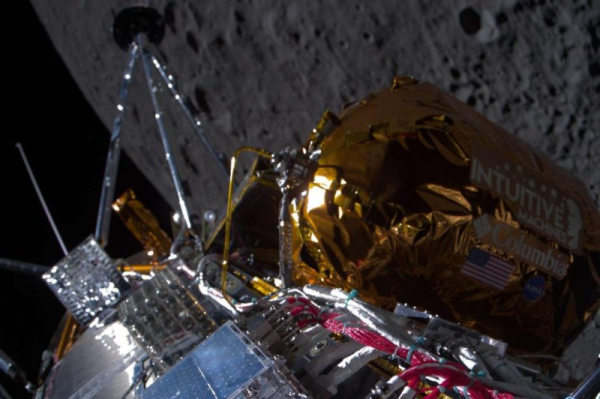Private lunar lander Odysseus set to arrive on moon’s surface

NASA will provide live coverage of the landing of the Intuitive Machines Odysseus lander starting at 4 p.m. EDT Thursday. Photo courtesy of Intuitive Machines
NASA will provide live coverage of the first commercial landing of an American unmanned spacecraft on the moon Thursday.
The Intuitive Machines Odysseus lunar lander is scheduled to touch down on the lunar surface Thursday where it will transmit data back to Earth. Advertisement
“Intuitive Machines is targeting no earlier than 5:30 p.m. EST Thursday, Feb. 22, to land their Odysseus lunar lander near Malapert A in the South Pole region of the Moon near Malapert A in the South Pole region of the Moon,” NASA said in a press release.
NASA announced Wednesday that the spacecraft had successfully completed lunar orbital insertion at about 60 miles above the surface.
NASA will provide live coverage of the landing on NASA TV and the NASA app beginning at 4 p.m. EDT.
The Odysseus lander is one of many commercial projects being supported by NASA as part of the Artimes Initiative, which supports private space exploration ahead of the planned Artimes mission, which aims to return humans to the lunar surface. Advertisement
The spacecraft was launched atop a SpaceX Falcon 9 from Kennedy Space Center in Florida on Feb. 15.
The mission was originally intended to land at the Oceanus Procellarum, but the landing site was changed to the Malapert A region.
“The decision to move from the original landing site in Oceanus Procellarum was based on a need to learn more about terrain and communications near the lunar south pole,” NASA said in a press release.
The mission is the second commercial mission under NASA’s Commercial Lunar Payload Services initiative and the first mission from Intuitive Machines under the initiative.
“The NASA payloads will focus on demonstrating communication, navigation and precision landing technologies, and gathering scientific data about rocket plume and lunar surface interactions,” NASA said.
NASA also says the lander will use six instruments gather data on “rocket plume and lunar surface interactions affecting radio astronomy.”
